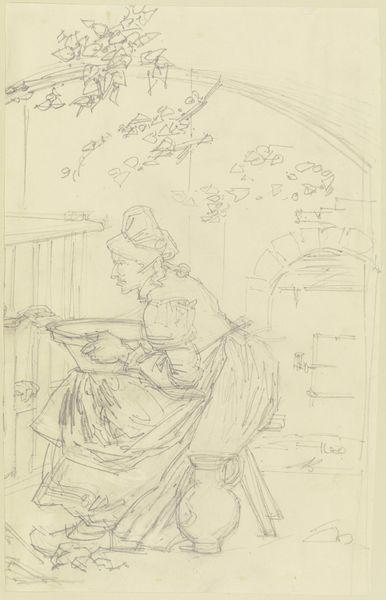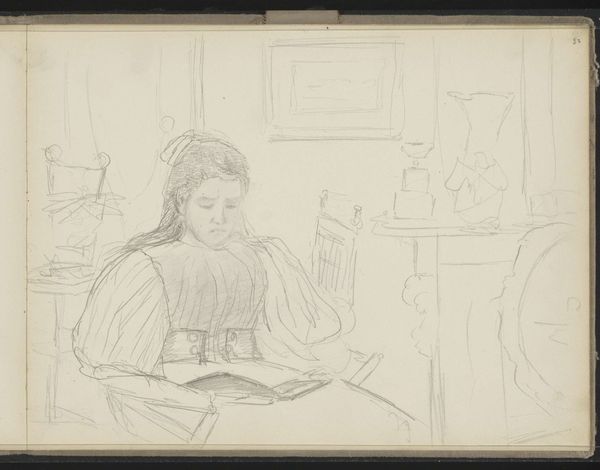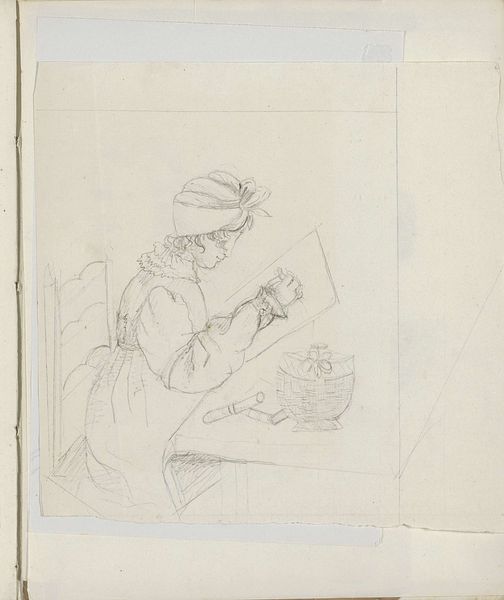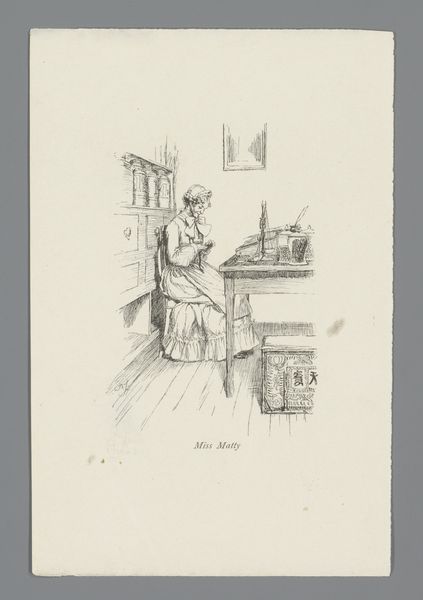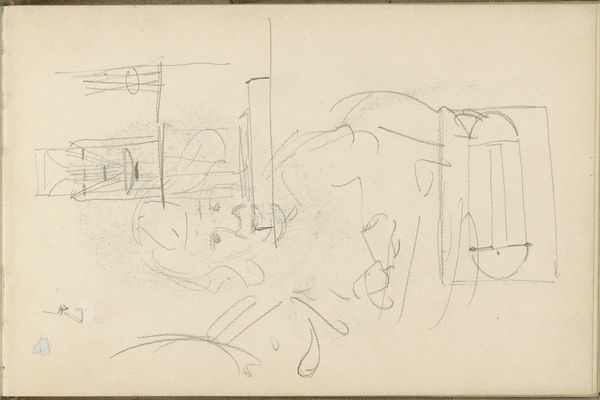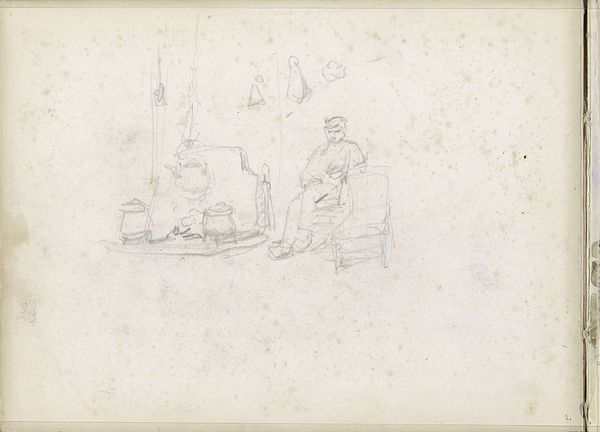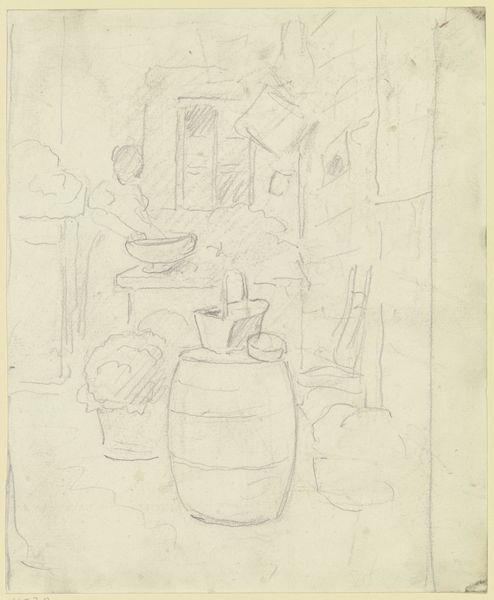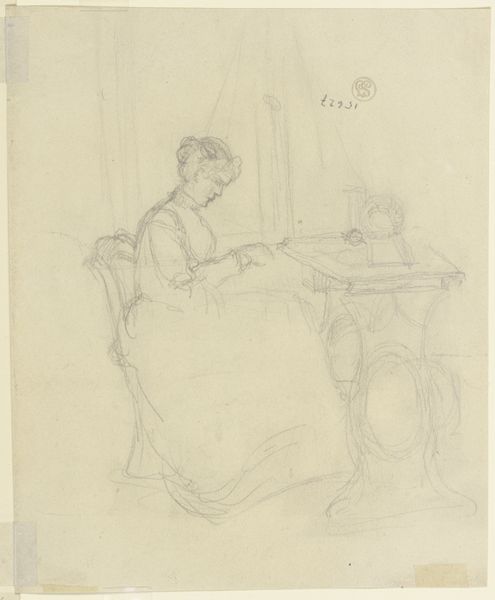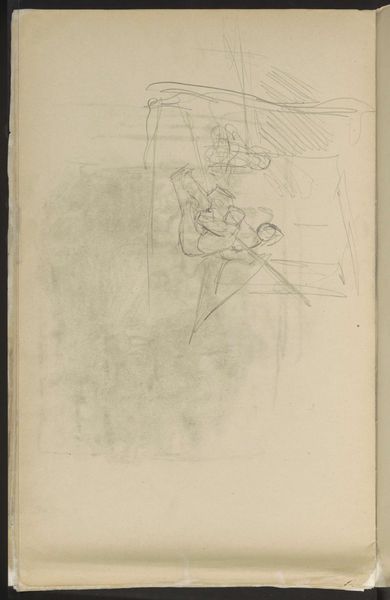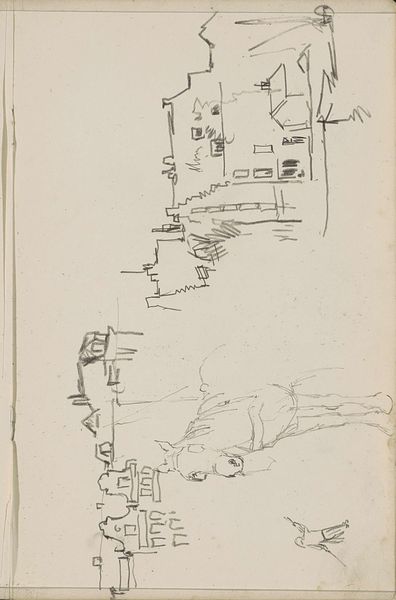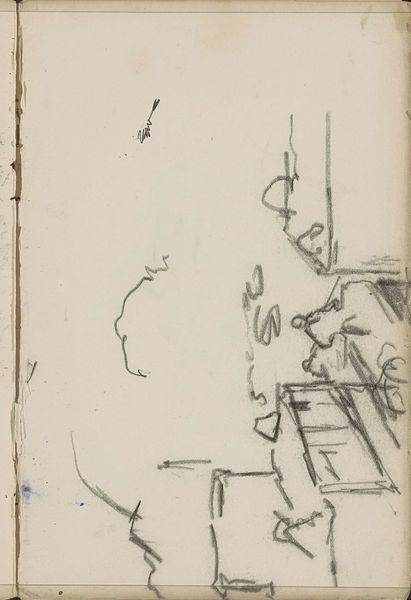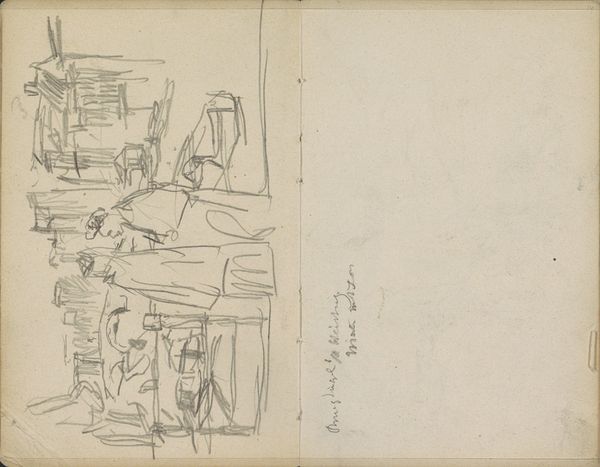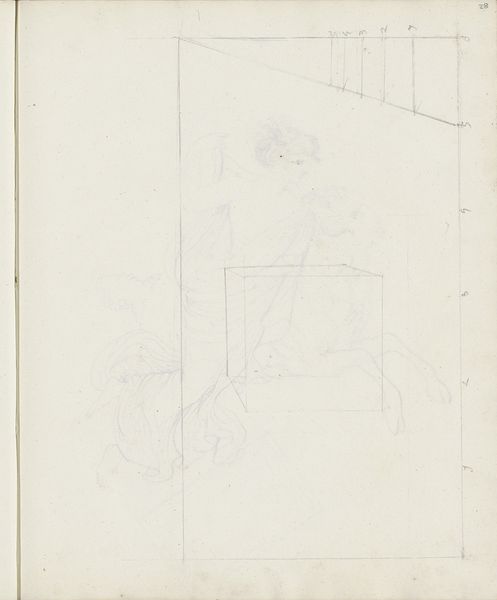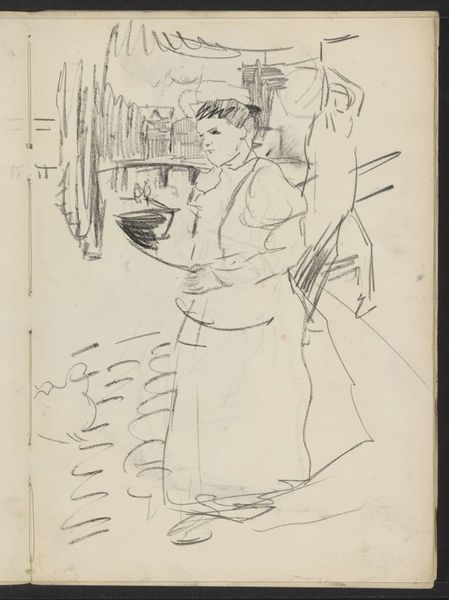
Copyright: Rijks Museum: Open Domain
Curator: This drawing, titled "Handwerkende vrouw bij een schoorsteenmantel," or "Craftswoman by a Mantelpiece," was created around 1903-1904 by Carel Adolph Lion Cachet. It is currently held in the collection of the Rijksmuseum. What strikes you most about it? Editor: Its quietness. The delicate pencil lines give it a subdued, almost reverent, quality, like we're peeking into a very private moment. Is that privacy available to all or reflective of its time? Curator: Interesting observation. I see the compositional elements first – the fragmented studies, almost like a page from a design manual. Note the artist's focus: architectural details, furniture elements, interspersed with figure studies. It's an intriguing exploration of form and line. Editor: And what about the "craftswoman?" There's an argument to be made for considering this image in relation to the burgeoning labor movements of the early 20th century. Does it sentimentalize or romanticize working-class women or is she a sign of new visibility and opportunities for them at this time? Curator: While the political and social context certainly frames our understanding, I'm drawn to the artistry. The delicate shading, the precision of the architectural rendering – it's all about the artist's skillful control of the medium. Editor: Yet that medium—pencil on paper—and the unfinished nature of the sketch are integral to its impact. It evokes a sense of process, the fleeting nature of a moment observed and captured, suggesting her opportunities will similarly fade in a sketch. Curator: A valid point, and to be sure, its unfinished nature allows us access to the artist's thinking, their methods. Editor: Which makes the image of this artisan or the thought of working life perhaps the primary, driving focus. Curator: Perhaps. However, what endures is the strength of the composition and the artist's virtuosity, how well the sketch’s formal devices function independently of its era, culture or narrative. Editor: I appreciate the artistry while thinking about how her representation fits within the cultural narrative of women's work at the time. It gives the picture both power and specificity.
Comments
No comments
Be the first to comment and join the conversation on the ultimate creative platform.
